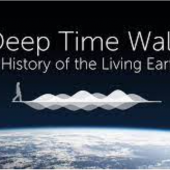
Abstract: At Schumacher College, Dartington, UK in 2008 we introduced the Deep Time Walk – a transformative learning experience in which college participants walk 4.6km in the countryside of the Dartington Estate representing the entire 4,600 million years of our planet’s history. The aim of the walk is to increase the ecological awareness of participants by giving them an embodied experience of the immense age of our Earth. At certain points during the walk a facilitator explains key events in earth history, such as the formation of the planet and the first appearance of living cells. Here we assess the effectiveness of the Deep Time Walk offered to eleven distinct groups of walkers during 2022 -2023. Participants on each of the eleven Deep Time Walks were asked to respond to a simple questionnaire asking them to quantify how much of seven qualities they felt immediately before and immediately after their walk (these were: Awe and Wonder, Sense of Earth’s Ancientness, Connection to Nature, Consequences of the Crisis, Hope, Commitment to Personal Change and Commitment to Political Change) . In total, 153 participants took part in the eleven walks and responded to the questionnaire. Analysis of the data showed a highly statistically significant increase across all seven qualities (p<0.00001 for each quality), suggesting that the Deep Time Walk is an effective means for developing and enhancing ecological awareness and commitment to action in these times of severe global crisis. Qualitative data were not collected during this phase of the study due to time limitations during walks. We recognise the importance of this kind of data and are devising ways of gathering it for both past and future walks.
Continue Reading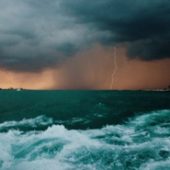
While sustainability is often perceived from a framework of fear, emergent understandings of sustainability are rooted in pedagogies of hope. In particular, radical hope, or critical-transformative hope, is transforming sustainability. Radical hope is contextually dependent and is made meaningful when in action. Collective movements such as the buen vivir social movements and transition movements are realizations of radical hope in praxis. Overall, this paper aims to demonstrate that through a multiplicity of movements, sustainability is in the process of continual becoming.
Continue Reading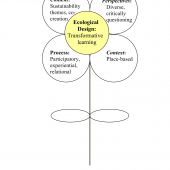
Although sustainability has become an important focus in higher education, there is a need for understanding how sustainability competencies can be cultivated in college and university courses and programs. This article argues that learners who are to become capable of affecting holistic sustainable change, transforming values and culture, healing the earth and human communities, and designing creative solutions, must have the opportunity to engage in learning processes that reflect these learning outcomes. We outline key elements of sustainability pedagogy and suggest best pedagogical practices for designing engaging and holistic sustainability learning.
Continue Reading
This conceptual article examines how teaching and learning has changed and continues to change as a result of the increase in cultural diversity in post-secondary classrooms. It focuses on how students’ and instructors’ culture and traditions impact the teaching and learning experience in culturally diverse post-secondary settings. Providing evidence from theoretical perspectives, this review assesses the need for and the potentially transformative nature of education that is sustainable.
English may be the lingua franca on North American university campuses, as well as on many campuses around the world, but since students and instructors come from many different backgrounds, just because English is the predominant language does not necessarily mean that education based on Western principles is the only way to do education. International students and instructors come from countries where education may be conducted differently and since the North American university system requires learning to be demonstrated in certain ways, it puts students that come from different systems at a disadvantage. Therefore it would seem that North American universities could benefit from the tenets of culturally sensitive teaching that Gay (2000) suggests as comprehensive, multidimensional, empowering, transforming, and emancipatory.
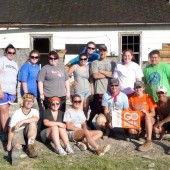
After Hurricane Katrina devastated parts of the Gulf Coast, Susquehanna University (SU) responded by launching the Hurricane Relief Team (HRT) program. In the past six years, SU has sent 16 teams of 15-20 students each and the program has evolved from a basic volunteer service opportunity into a service-learning experience and later into a two-week, cross-cultural service-learning program. While this study is not designed to determine whether participation in HRT, as a specific program, impacted graduation rates, it is intended to provide support for the correlation between civically engaged students and persistence to graduation. Through this example of a cross-cultural, service-learning program, the examination of graduation rates of HRT participants provides evidence of the potentially transformative nature of the experience as derived from historical data.
Continue Reading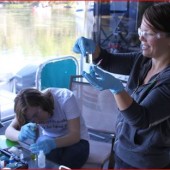
This paper presents a case study of an experiential learning project, an analysis of its transformative learning effects, and a description of the aspects most influential on transformative learning. The project is an eight-day houseboat excursion with students at the University of North Florida. Student work products were evaluated for evidence for transformative learning. The most powerful factors causing transformative learning were the experiential aspect of studying in the field, projects done strictly within a student’s major discipline, and extra-disciplinary projects done intentionally outside a student’s major discipline.
Continue ReadingThis article discusses how living systems principles can inform educational design. It describes a theoretical framework for creating academic learning experiences as organic wholes that sustain learning verve. The framework is intended to aid educators in awakening a felt sensation of aliveness, vibrancy, and self-organizing creativity in a group of learners. It seeks to create […]
Continue ReadingThis case describes how four teacher candidates, placed for a year-long internship in an elementary school with a garden, learned to teach for sustainability. Evidence from the interns’ Teacher Work Samples, survey data, interviews, and observational data are used to assess the extent to which teacher candidates demonstrated the knowledge, skills and dispositions to teach […]
Continue ReadingIf educators are to effectively prepare learners with the knowledge, skills, and values they will need for creating more sustainable places and communities, a transition must be made from transmissive teaching models to transformative learning processes. But how can courses be designed or redesigned so that they create opportunities for transformational sustainability learning, and how […]
Continue Reading